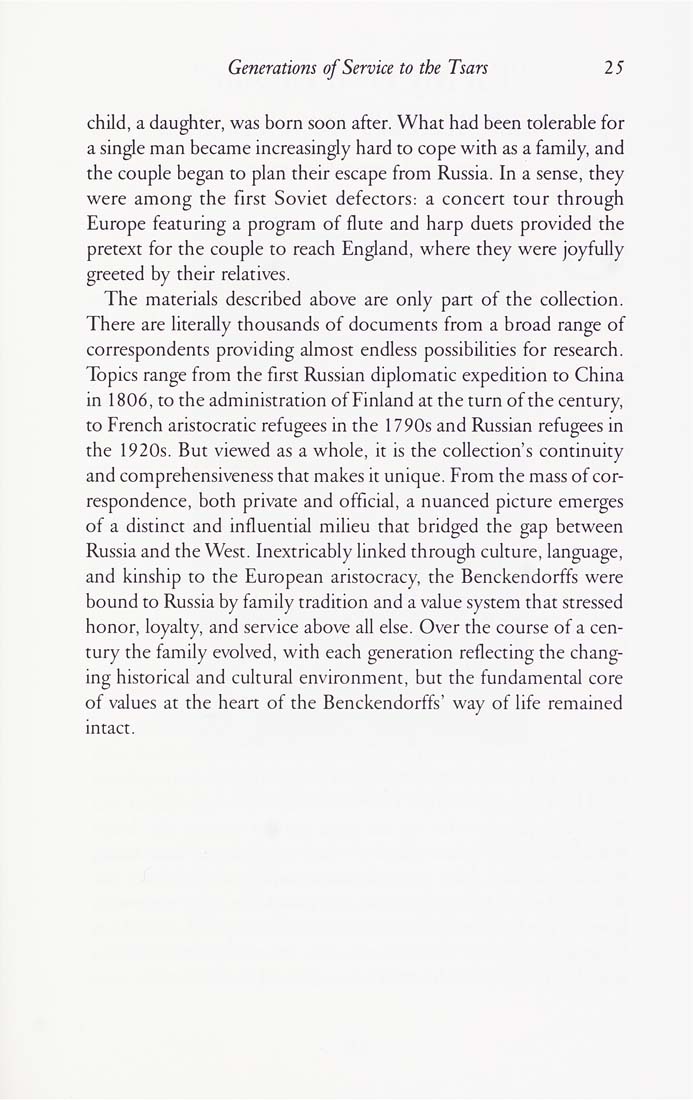Columbia Library columns (v.42(1992Nov-1993May))
(New York : Friends of the Columbia Libraries. )
|
||
|
|
|
|
| v.42,no.3(1993:May): Page 25 |

Generations of Service to the Tsars 25 child, a daughter, was born soon after. What had been tolerable for a single man became increasingly hard to cope with as a family, and the couple began to plan their escape from Russia. In a sense, they were among the first Soviet defectors: a concert tour through Europe featuring a program of flute and harp duets provided the pretext for the couple to reach England, where they were joyfully greeted by their relatives. The materials described above are only part of the collection. There are literally thousands of documents from a broad range of correspondents providing almost endless possibilities for research. Topics range from the first Russian diplomatic expedition to China in 1806, to the administration of Finland at the turn of the century, to French aristocratic refugees in the 1790s and Russian refugees in the 1920s. But viewed as a whole, it is the collection's continuity and comprehensiveness that makes it unique. From the mass of cor¬ respondence, both private and official, a nuanced picture emerges of a distinct and influential milieu that bridged the gap between Russia and the West. Inextricably linked through culture, language, and kinship to the European aristocracy, the Benckendorffs were bound to Russia by family tradition and a value system that stressed honor, loyalty, and service above all else. Over the course of a cen¬ tury the family evolved, with each generation reflecting the chang¬ ing historical and cultural environment, but the fundamental core of values at the heart of the Benckendorffs' way of life remained intact. |
| v.42,no.3(1993:May): Page 25 |







